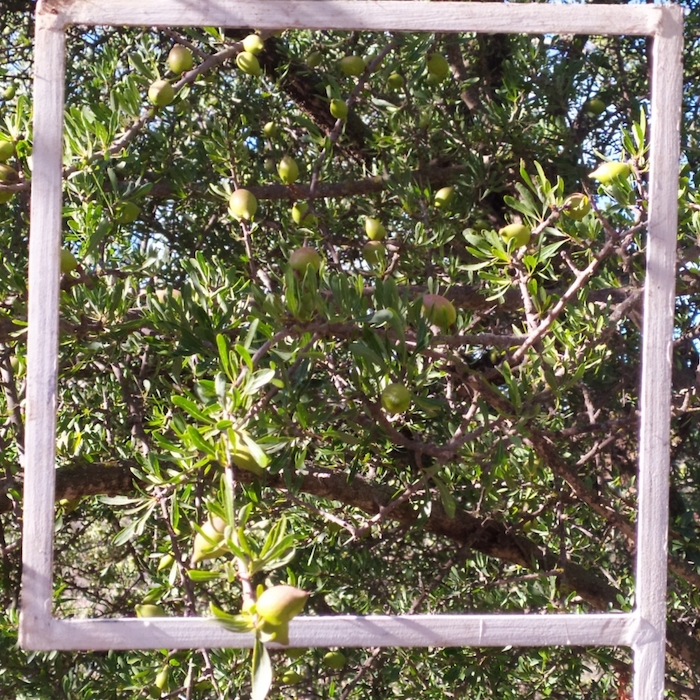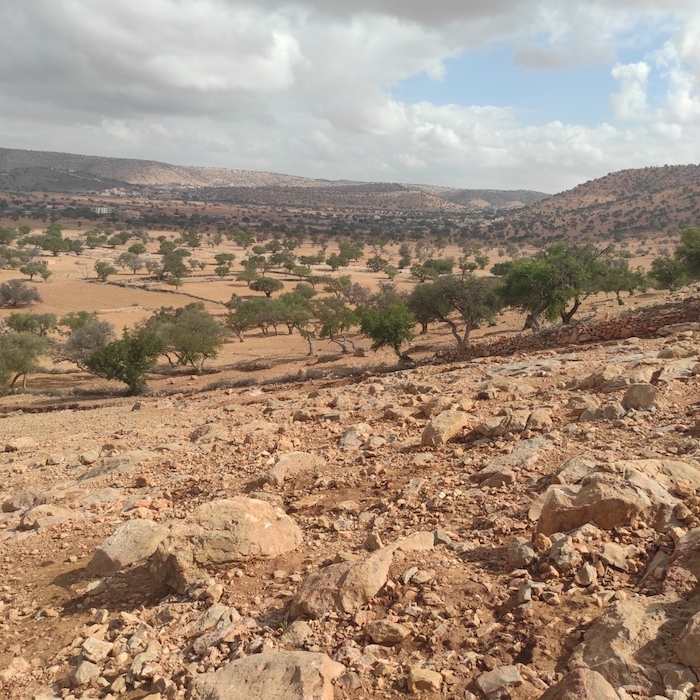
2023 #CCEAwards Showcase: REFAM Argan Predictive Model
October 25, 2023
By CCE
“They successfully adapted Quebec technology from one industry to another specific context.” – Jury
Category: International
Ambassador Award and Award of Excellence Winners: WSP and Cowater International
As part of the Renforcement Économique des Femmes de la Filière Arganière au Maroc (REFAM) project developed by Cowater International, WSP Canada was mandated to design and develop a predictive model of argan tree production and integrated it into a collaborative web platform to help assess the annual yield of this fruit, using deep learning algorithms. This geoportal allows stakeholders in Morocco’s general population to access relevant information and, thus, promotes the economic empowerment of women working in this key sector.
An invaluable tool
Produced from the kernels of trees endemic to Morocco, argan oil represents traditional Moroccan agriculture. The fruits of the tree are harvested and processed by local Berber pickers, mostly women, and then distributed by co-operatives.
Given an increase in global demand, players in the argan sector wanted better visibility of the probable volume of fruit harvests, so they could better manage the resource and negotiate a fair price.
The REFAM project is a five-year initiative, designed by Cowater with the financial support of Canada’s federal government (specifically, Global Affairs Canada). Within this context, WSP designed a geographic information system (GIS), predictive model and portal for production management and forecasting of argan trees in Morocco’s Arganeraie Biosphere Reserve, listed by UNESCO as the first of its kind.
To generate the GIS portal, WSP’s project team—based in Quebec—co-ordinated two field operations in collaboration with Moroccan experts. Observations and measurements were collected from 300 plots, representing more than 900 sample trees. The data was then associated with satellite images, making it possible to estimate the density and defoliation of trees and many other forest health indicators in the territory under study.
These characteristics were then coupled with field observations, climatic observations and other variables via deep learning algorithms, so the team could generate an annual yield forecasting model.
The GIS portal was made available in both French and Arabic, so local entrepreneurs could more easily take ownership of it. WSP anticipates the portal will become an invaluable tool for 20,000 Moroccans whose livelihoods depend on argan oil. The industry generates a turnover of $150 million annually and an export value of $36 million for communities living mainly in desert areas.
Built for the long term
The GIS portal was custom-developed over three years in collaboration with its main beneficiary, the Agence Nationale de Développement des Zones Oasiennes et l’Arganier (ANDZOA), through all stages of the project, from technological choices to management of the solution, which the project charter requires to be handled by the local argan sector itself over the long term. Taking that need for sustainability into account, the team based the digital interactive mapping GIS platform on open-source software and used free satellite images and other publicly available data.
The experimental device used for the project was modelled on Quebec forestry expertise in networks of sample plots. This technology made it possible to improve the solution through annual observations.
Weekly meetings were established between WSP and ANDZOA’s technical team to enable the integration of new data and the configuration of the tool. Guides and videos were produced to document various processes and technologies.
Virtual sessions and workshops, culminating in the arrival of the ANDZOA technical team in Canada, ensured effective management of the solution—such that the technology is still being used today. Indeed, ANDZOA is considering extending its use to other applications.

The fruits of the argan tree are harvested and processed by local Berber pickers, mostly women, and then distributed by co-operatives. Photo courtesy WSP.
Conserving resources
The development of the GIS portal is part of the Moroccan government’s strategy for the sustainable development of the argan sector. The Arganeraie Biosphere Reserve is a natural rampart against desertification, as its ecosystem protects soil against wind erosion and runoff, promoting the supply of groundwater.
The portal represents an effort to conserve these resources, as improvements in knowledge of the state of the argan tree will contribute to better decision-making. Sustainable exploitation of the tree can strengthen the resilience of the local population in the face of climate change, which has had severe impacts in the region and especially affects vulnerable communities.
As data is analyzed through a predictive model, it provides a better understanding of the correlation between extreme climatic variables and the seasonal development phases of argan trees. Various stakeholders, including academics, industrialists, co-operatives and government, benefit from more up-to-date and usable data.
Stakeholder involvement
The main area of complexity was the co-ordination of various stakeholders across the argan sector who contribute to and/or benefit from the project. Several levels of political authority were involved to ensure good communication through institutional hierarchies.
The argan harvesting system is based on a vast and generational system of rights holders, for which consideration and respect are essential during field operations. There is no database for this system, however, and the means of communication remain very limited.
It was therefore necessary to identify the rights holders, with the help of local representatives for each of 900 selected sample trees, and then to communicate directly with those rights holders in the field. This represented a colossal task for randomly selected trees in a semi-desertic environment.
The work took place during the global COVID-19 pandemic, limiting the team’s trips to Morocco; but thanks to local experts and consultation between stakeholders, the project was developed and implemented according to the planned timelines.
Meeting objectives
At the start of the mandate, WSP’s project team recognized the existing state of knowledge and showed how the limited amount of data available was insufficient to generate a viable predictive model. Thanks to the subsequent establishment of a sample plots network, remote sensing, deep learning and local stakeholder engagement with rights holders, the team was able to meet its objectives.
A rigorous process was undertaken to create the GIS portal, including workshops to identify the project’s specific needs and select the platform best-suited to support the various components of the solution.
The combined efforts of all those involved will contribute to the project’s sustainability. As the GIS portal now provides reliable annual production forecasts to harvesters and co-operative members, they have expressed how this tool will greatly assist them in negotiating a fair price.
REFAM Argan Predictive Model, Morocco
Award-winning firm (prime consultant): WSP, Montreal, Que. (Michèle Laflamme, M.Sc., PMP; Christian Bélanger, Ph.D.; Félix-Antoine Audet, B.Sc., M.Sc.).
Owner: L’Agence Nationale de Développement des Zones Oasiennes et l’Arganier (ANDZOA) and la Fédération Interprofessionnelle de la Filière de l’Argane (FIFARGANE).
Other key players: Cowater International (client), École Nationale Forestière d’ingénieurs (ENFI) (subconsultant), Mohammed V Faculté des Sciences (subconsultant), Global Affairs Canada (collaboration), European Space Agency (ESA) (satellite imagery), Climate Hazards Group InfraRed Precipitation with Station (CHIRPS) (satellite data), Centre royal de télédétection spatiale du Maroc (satellite imagery), Direction générale de la météorologie du Maroc (data), METER Group (sensors and instrumentation).
